Abstract
1. We compare the sensitivity and specificity of chosen outcome criteria in a placebo-controlled, randomised cross-over study of the efficacy of maintenance therapy with the levodopa/carbidopa combination (Sinemet Plus) alone. Patients were characterised by having idiopathic Parkinsonism with no overt fluctuations in control in relation to individual doses of medication. 2. The effect of omission of a morning dose of maintenance therapy on simple timed tests of mobility and manual dexterity, and on distance/time parameters of gait was studied in fourteen patients (aged 64 to 88 years). Measurements made 2, 4 and 6 h after morning active and placebo treatments were standardised by taking the pre-treatment measurement on that day as baseline. 3. In a linear model, which allowed for the structure of the study, neither the total time taken by each patient to get up from a chair, walk an individually set distance, turn, return to and sit in the chair, nor the rate of progress at fastening the same set of buttons, was sensitive to the treatment effect. 4. Three of the gait parameters, free walking speed, mean stride length and mean double support time, were sensitive to the treatment effect. Correction for the speed of each walk, caused some reduction in the sensitivity of stride length to treatment effect, but that of double support time remained. Speed, and double support time or stride length, appeared to be complementary in defining the treatment effect. 5. The linear modelling revealed the complexity of the treatment effect. Although active treatment, by comparison with placebo, increased free walking speed (P = 0.019), the more levodopa found in the plasma following treatment, (P = 0.0005) and the greater the increment in the concentration of its peripheral metabolite, 3-O-methyldopa (P = 0.006), the less the beneficial effect. This model may reflect reduced uptake into the brain and/or an adverse effect of parent drug or a metabolite. 6. The specificity of free walking speed for the treatment effect was good, as was that of mean stride length, after it had been corrected for speed of each walk, and of mean double support time, after correction for speed and incorporation of the change in lying blood pressure accompanying treatment into the model. 7. The measurements of gait parameters were ranked according to reliability.(ABSTRACT TRUNCATED AT 400 WORDS)
Full text
PDF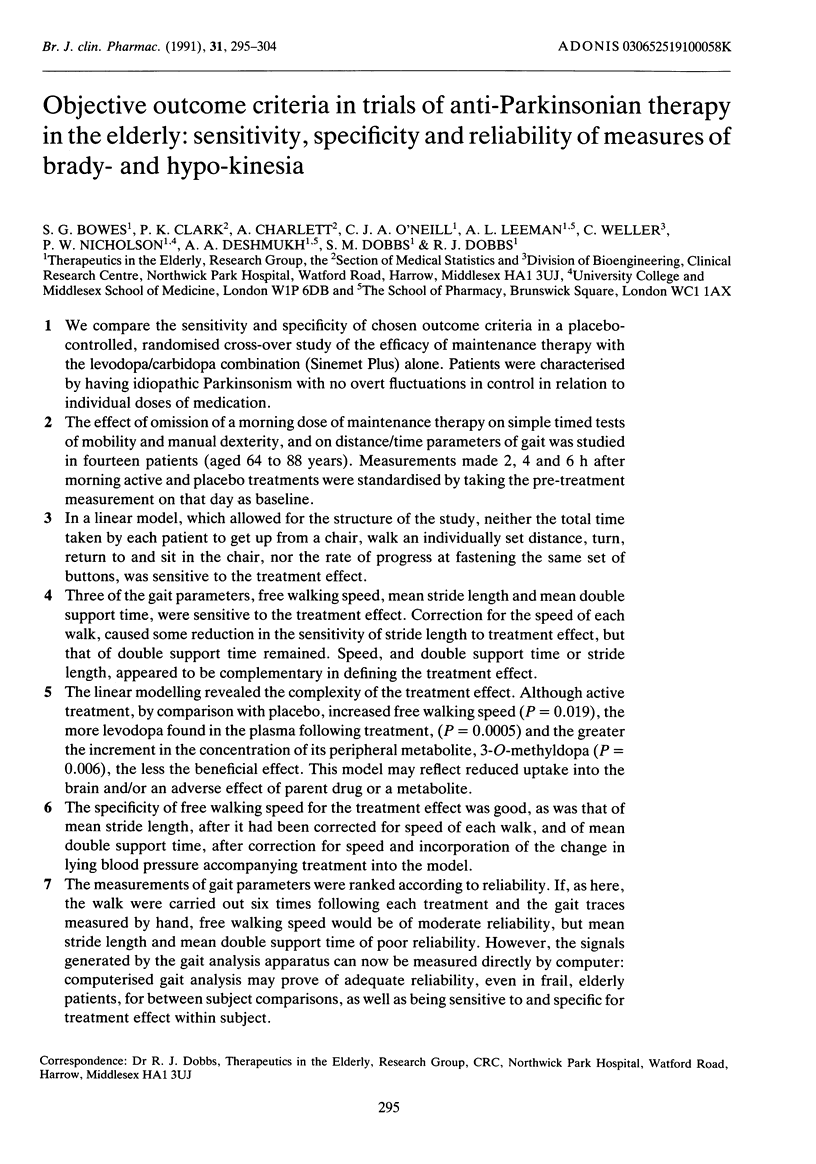
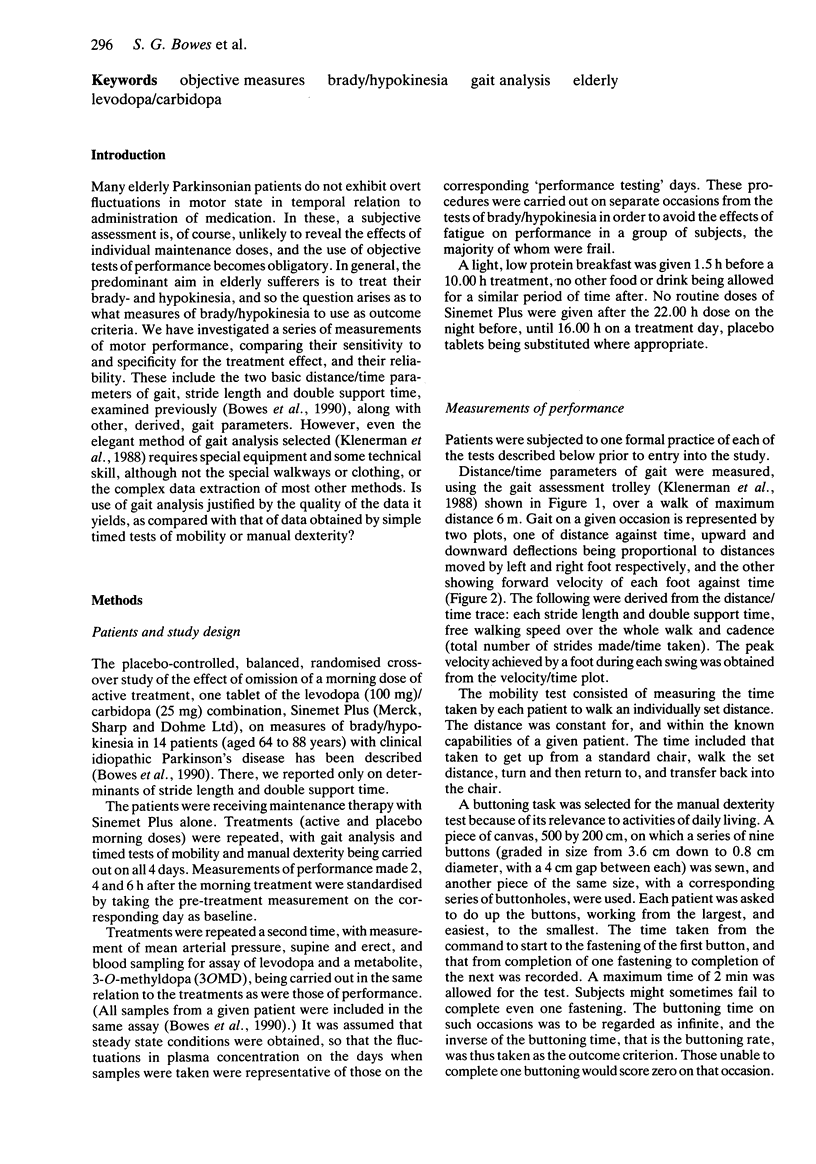
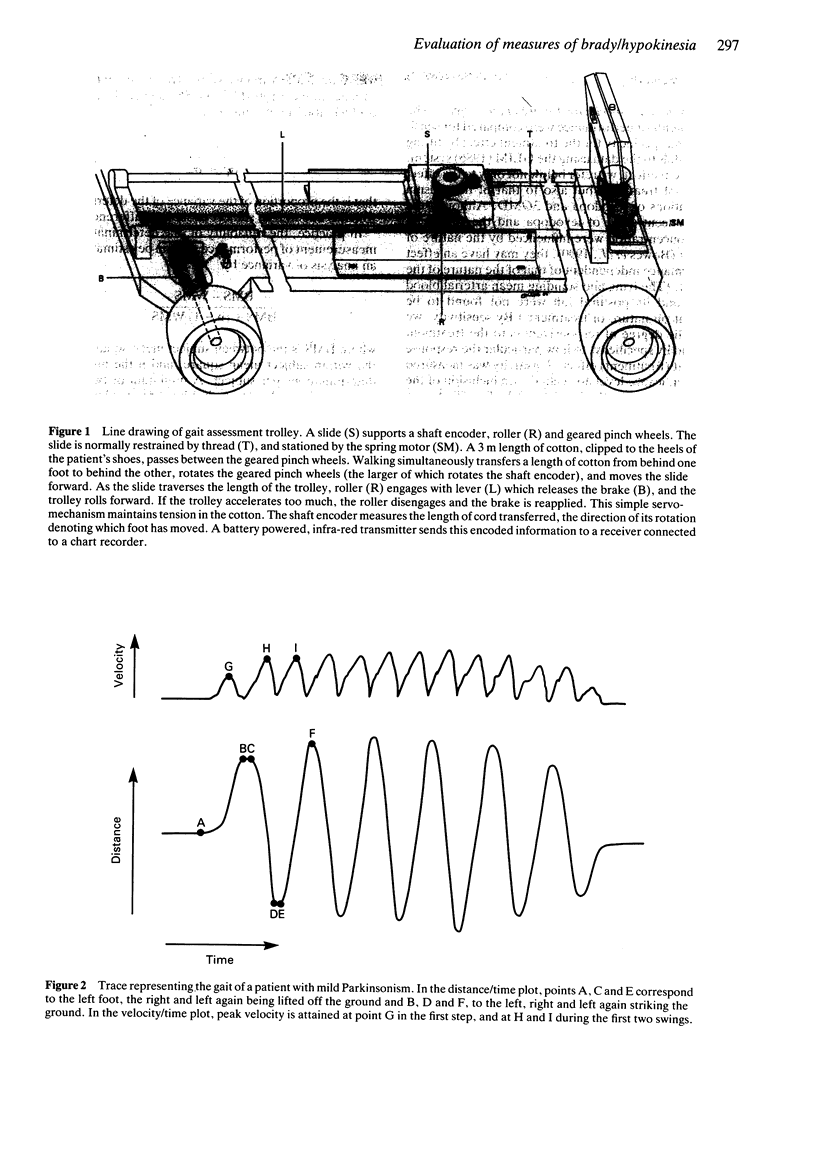
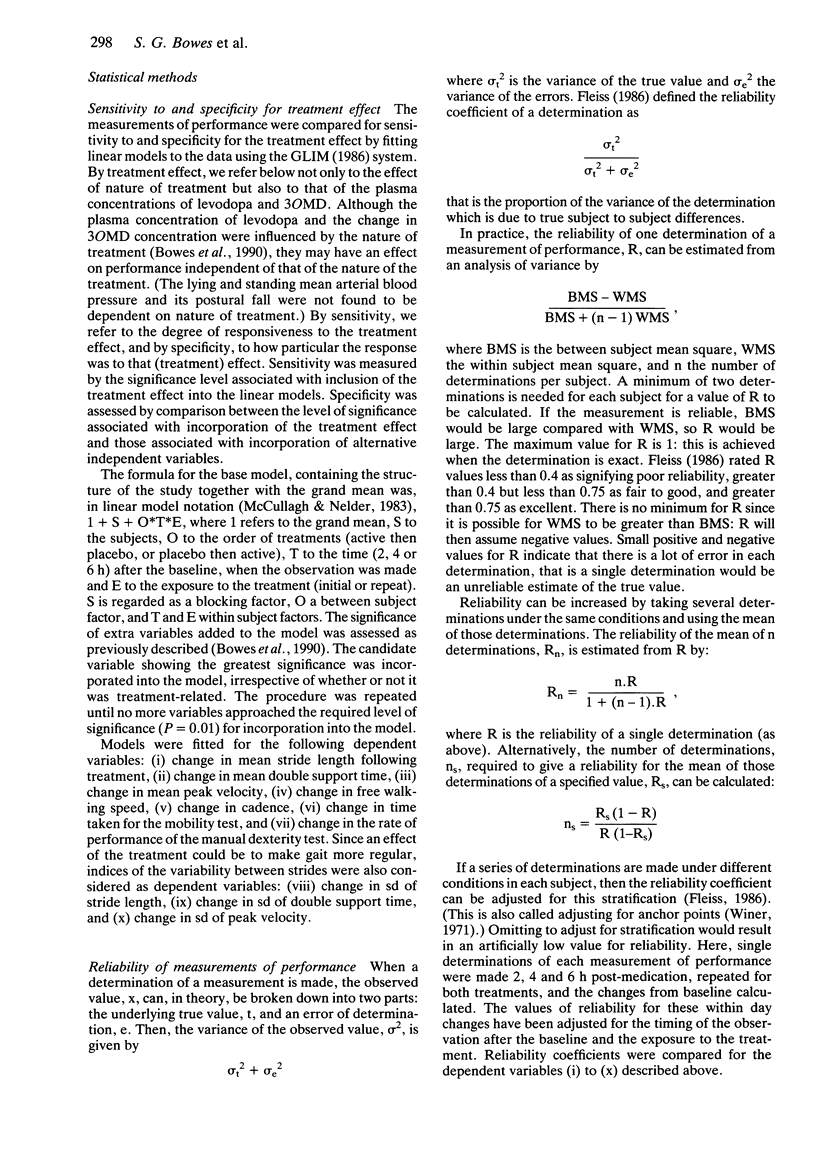
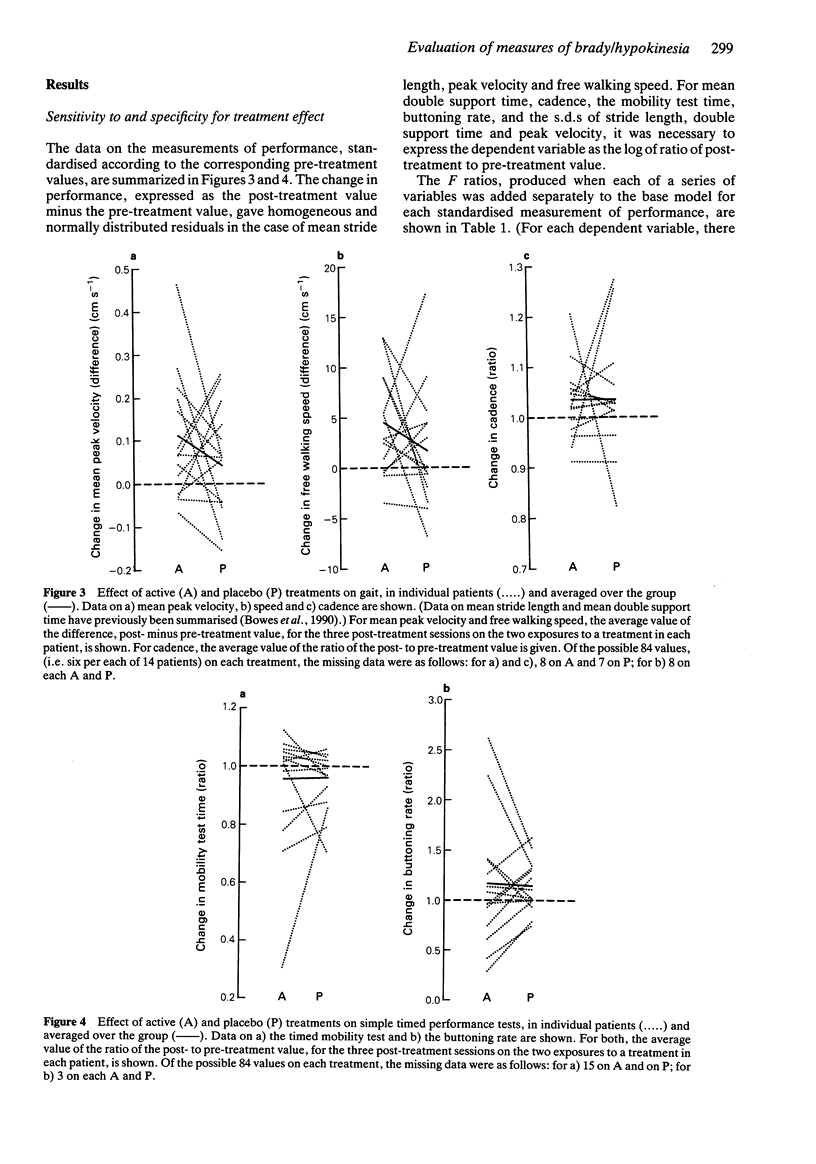
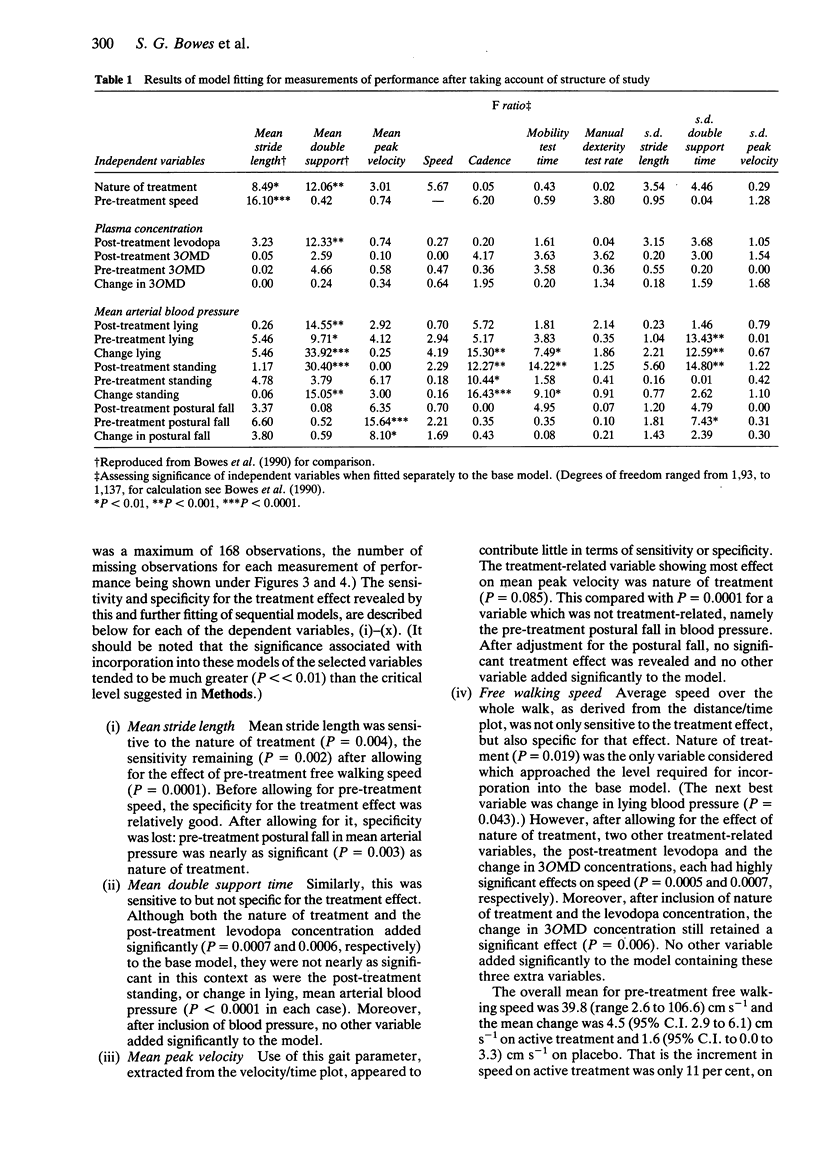
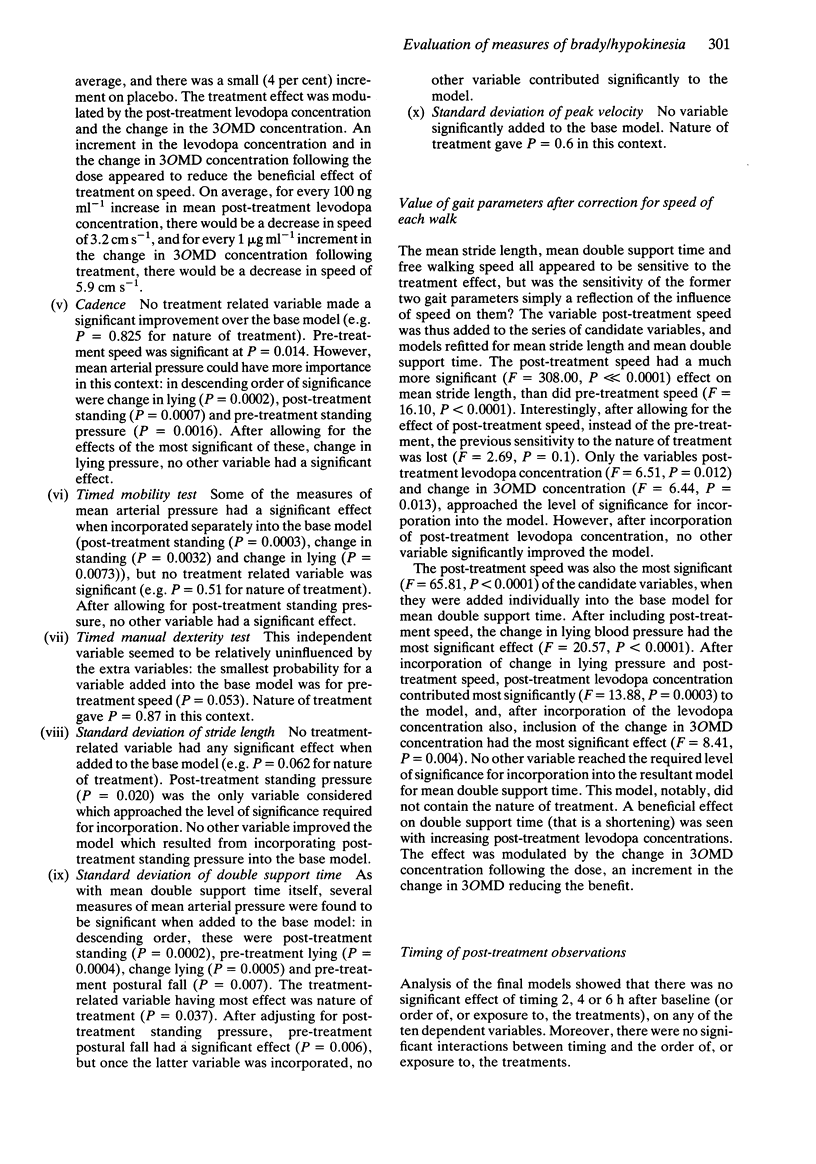
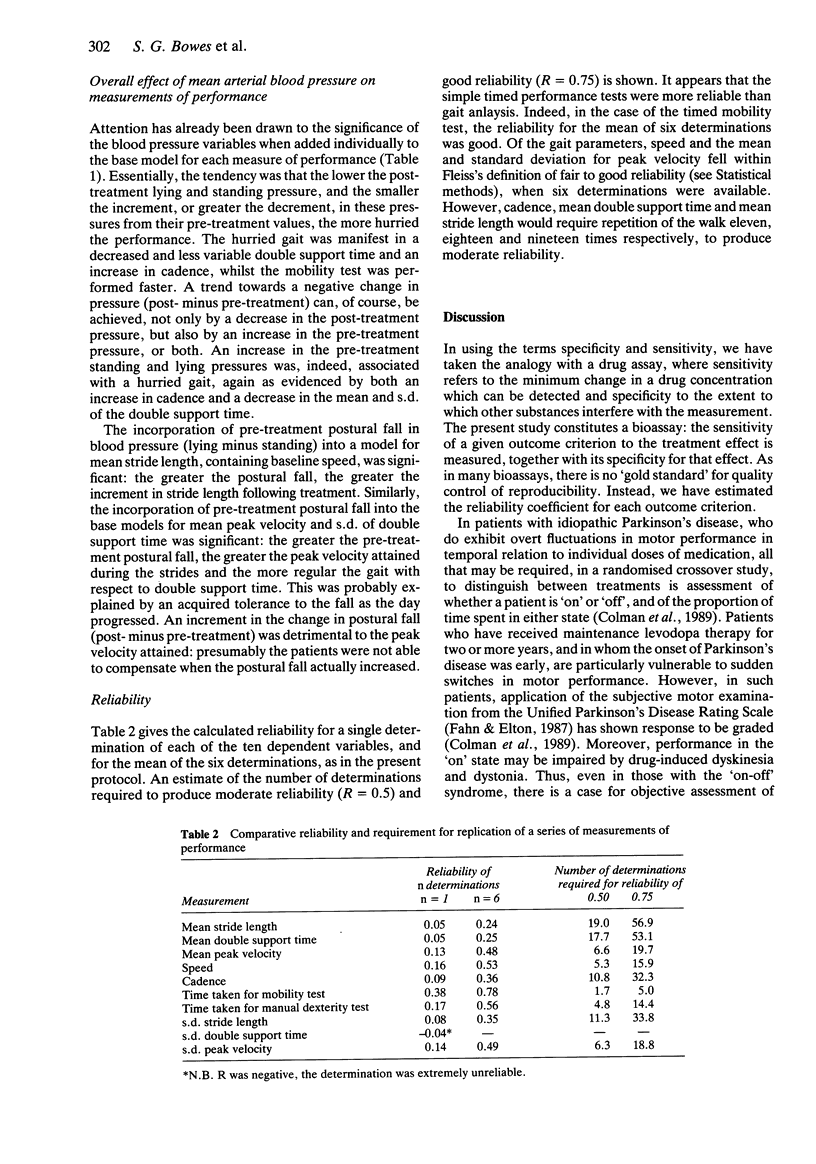
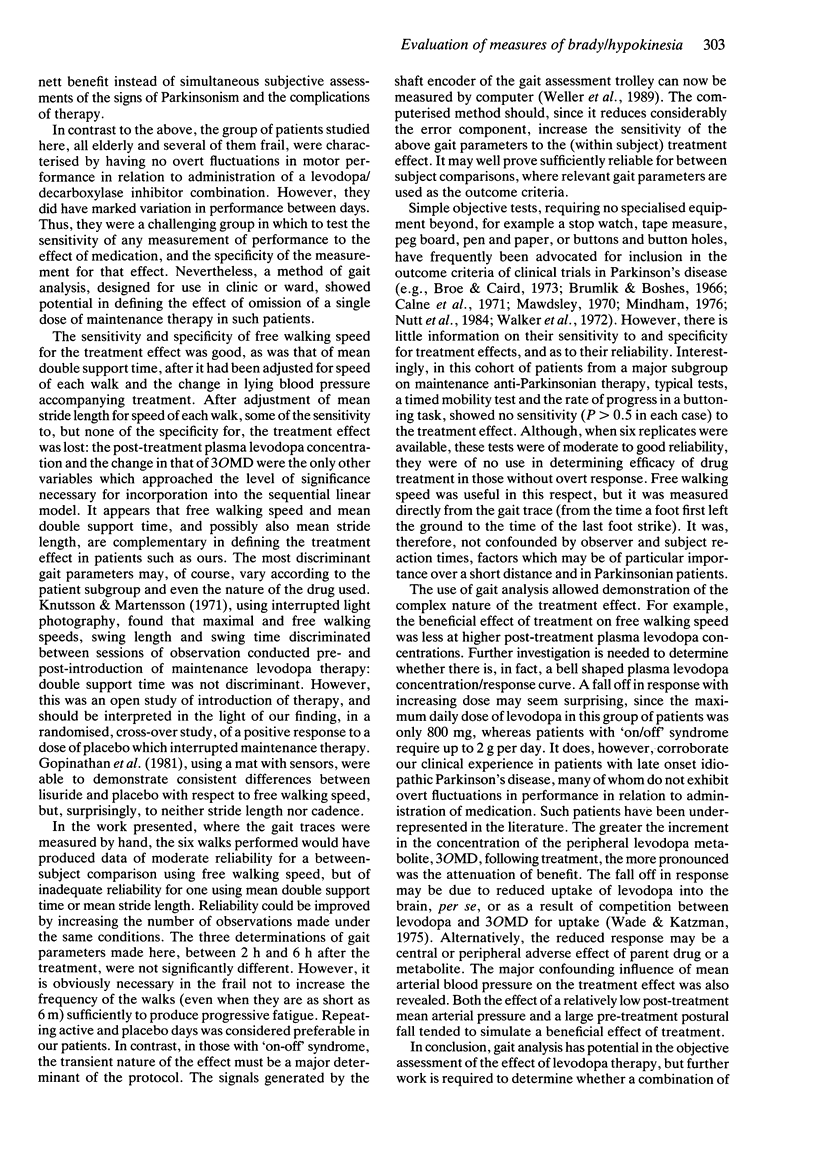
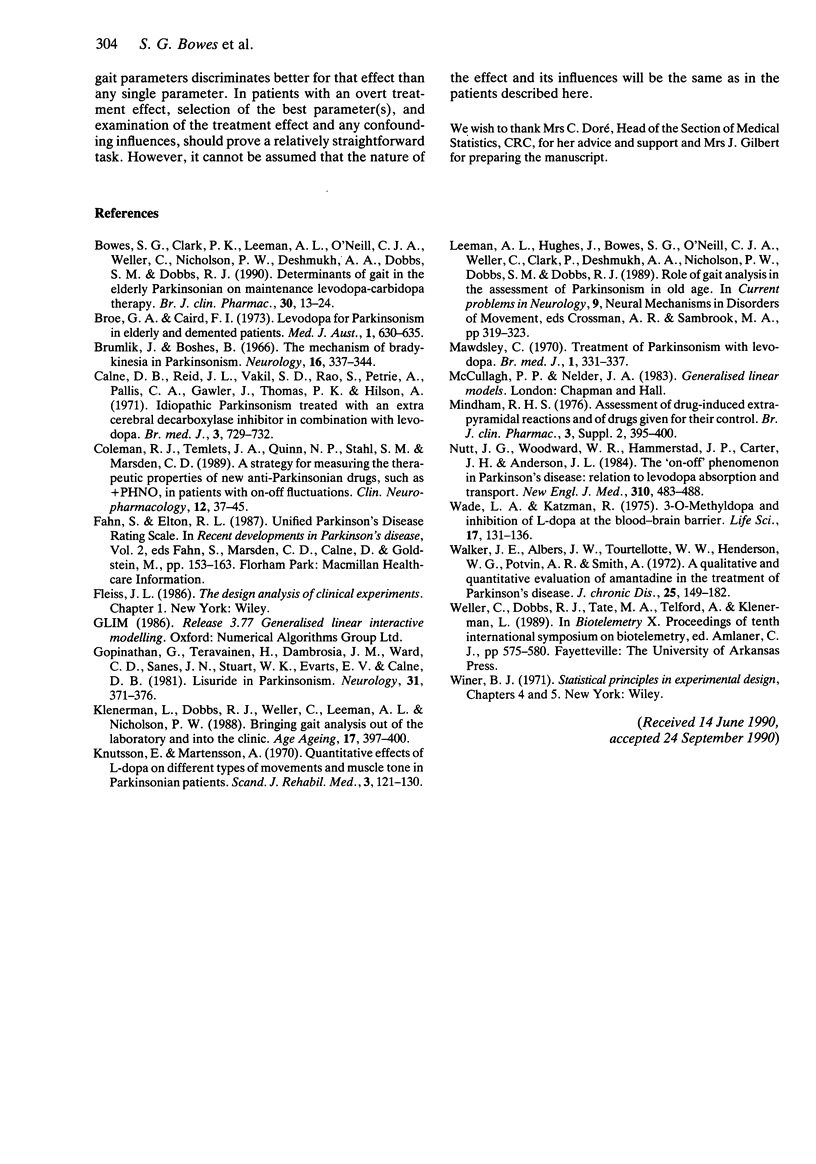
Selected References
These references are in PubMed. This may not be the complete list of references from this article.
- Bowes S. G., Clark P. K., Leeman A. L., O'Neill C. J., Weller C., Nicholson P. W., Deshmukh A. A., Dobbs S. M., Dobbs R. J. Determinants of gait in the elderly parkinsonian on maintenance levodopa/carbidopa therapy. Br J Clin Pharmacol. 1990 Jul;30(1):13–24. doi: 10.1111/j.1365-2125.1990.tb03738.x. [DOI] [PMC free article] [PubMed] [Google Scholar]
- Broe G. A., Caird F. I. Levodopa for parkinsonism in elderly and demented patients. Med J Aust. 1973 Mar 31;1(13):630–635. doi: 10.5694/j.1326-5377.1973.tb110594.x. [DOI] [PubMed] [Google Scholar]
- Brumlik J., Boshes B. The mechanism of bradykinesia in parkinsonism. Neurology. 1966 Apr;16(4):337–344. doi: 10.1212/wnl.16.4.337. [DOI] [PubMed] [Google Scholar]
- Calne D. B., Reid J. L., Vakil S. D., Rao S., Petrie A., Pallis C. A., Gawler J., Thomas P. K., Hilson A. Idiopathic Parkinsonism treated with an extracerebral decarboxylase inhibitor in combination with levodopa. Br Med J. 1971 Sep 25;3(5777):729–732. doi: 10.1136/bmj.3.5777.729. [DOI] [PMC free article] [PubMed] [Google Scholar]
- Coleman R. J., Temlett J. A., Quinn N. P., Stahl S. M., Marsden C. D. A strategy for measuring the therapeutic properties of new antiparkinsonian drugs, such as +PHNO, in patients with on-off fluctuations. Clin Neuropharmacol. 1989 Feb;12(1):37–45. doi: 10.1097/00002826-198902000-00005. [DOI] [PubMed] [Google Scholar]
- Gopinathan G., Teräväinen H., Dambrosia J. M., Ward C. D., Sanes J. N., Stuart W. K., Evarts E. V., Calne D. B. Lisuride in parkinsonism. Neurology. 1981 Apr;31(4):371–376. doi: 10.1212/wnl.31.4.371. [DOI] [PubMed] [Google Scholar]
- Klenerman L., Dobbs R. J., Weller C., Leeman A. L., Nicholson P. W. Bringing gait analysis out of the laboratory and into the clinic. Age Ageing. 1988 Nov;17(6):397–400. doi: 10.1093/ageing/17.6.397. [DOI] [PubMed] [Google Scholar]
- Knutsson E., Mårtensson A. Quantitative effects of L-dopa on different types of movements and muscle tone in Parkinsonian patients. Scand J Rehabil Med. 1971;3(3):121–130. [PubMed] [Google Scholar]
- Mawdsley C. Treatment of Parkinsonism with Laevo-dopa. Br Med J. 1970 Feb 7;1(5692):331–337. doi: 10.1136/bmj.1.5692.331. [DOI] [PMC free article] [PubMed] [Google Scholar]
- Mindham R. H. Assessment of drugs in schizophrenia. Asessment of drug-induced extrapyramidal reactions and of drugs given for their control. Br J Clin Pharmacol. 1976 Jun;3(3 Suppl 2):395–400. doi: 10.1111/j.1365-2125.1976.tb03732.x. [DOI] [PMC free article] [PubMed] [Google Scholar]
- Nutt J. G., Woodward W. R., Hammerstad J. P., Carter J. H., Anderson J. L. The "on-off" phenomenon in Parkinson's disease. Relation to levodopa absorption and transport. N Engl J Med. 1984 Feb 23;310(8):483–488. doi: 10.1056/NEJM198402233100802. [DOI] [PubMed] [Google Scholar]
- Wade L. A., Katzman R. 3-O-methyldopa uptake and inhibition of L-dopa at the blood-brain barrier. Life Sci. 1975 Jul 1;17(1):131–136. doi: 10.1016/0024-3205(75)90248-9. [DOI] [PubMed] [Google Scholar]
- Walker J. E., Albers J. W., Tourtellotte W. W., Henderson W. G., Potvin A. R., Smith A. A qualitative and quantitative evaluation of amantadine in the treatment of Parkinson's disease. J Chronic Dis. 1972 Mar;25(3):149–182. doi: 10.1016/0021-9681(72)90171-3. [DOI] [PubMed] [Google Scholar]


